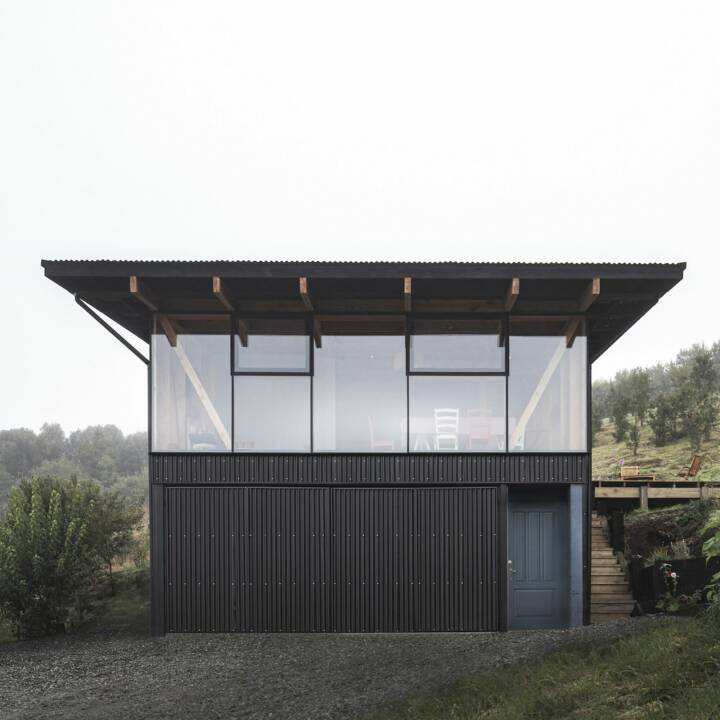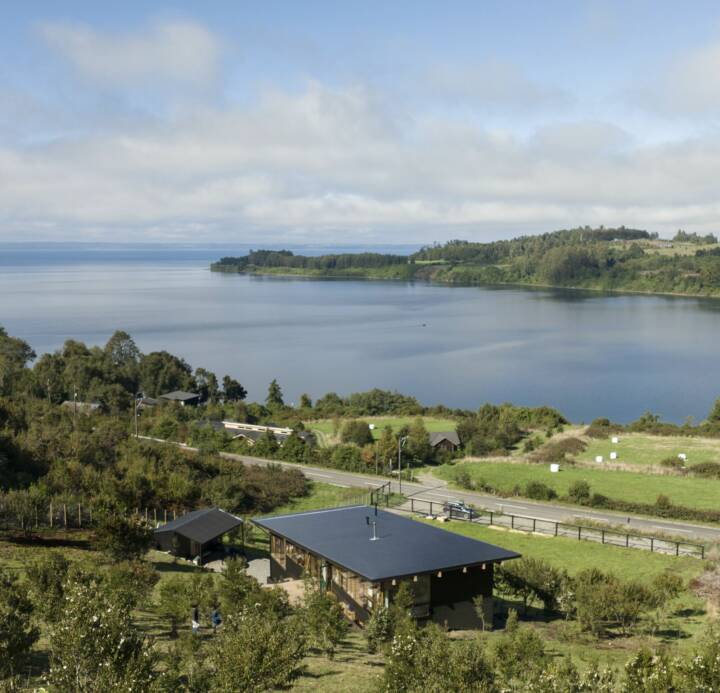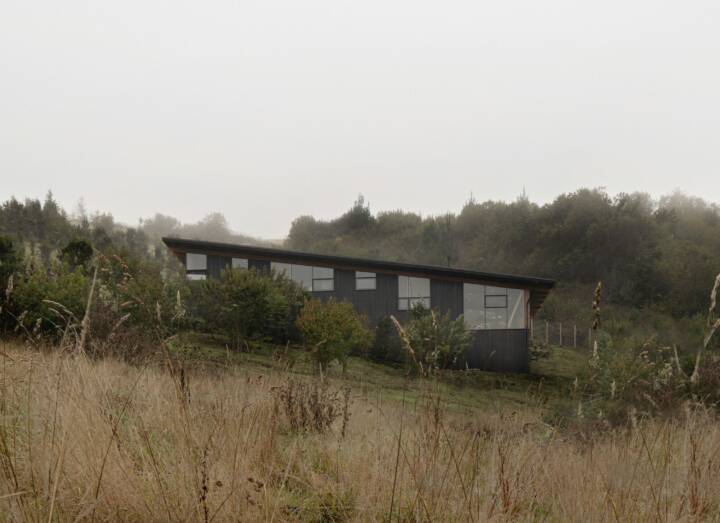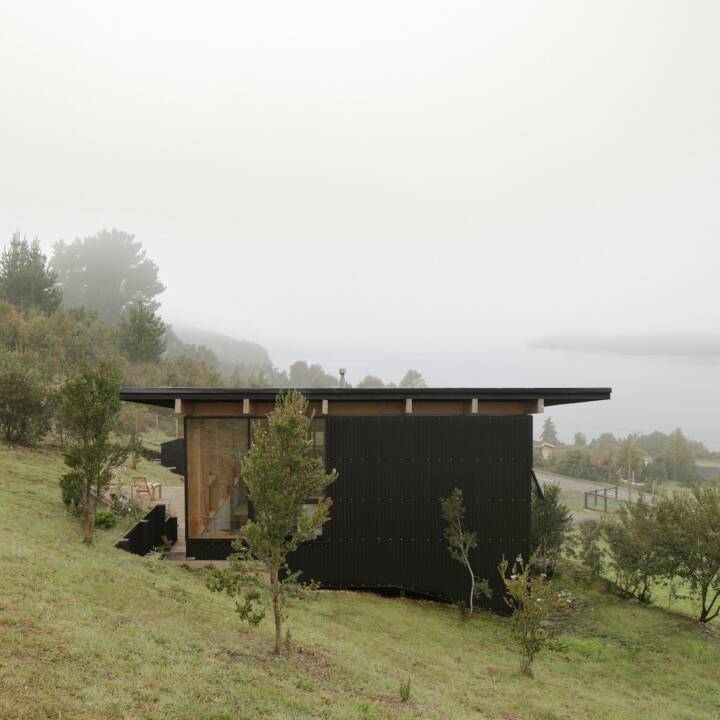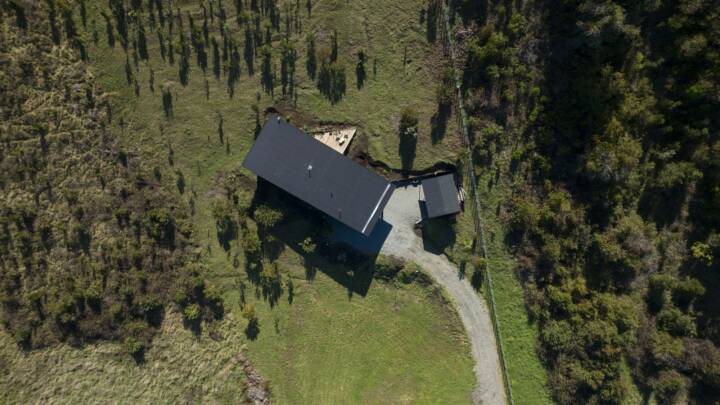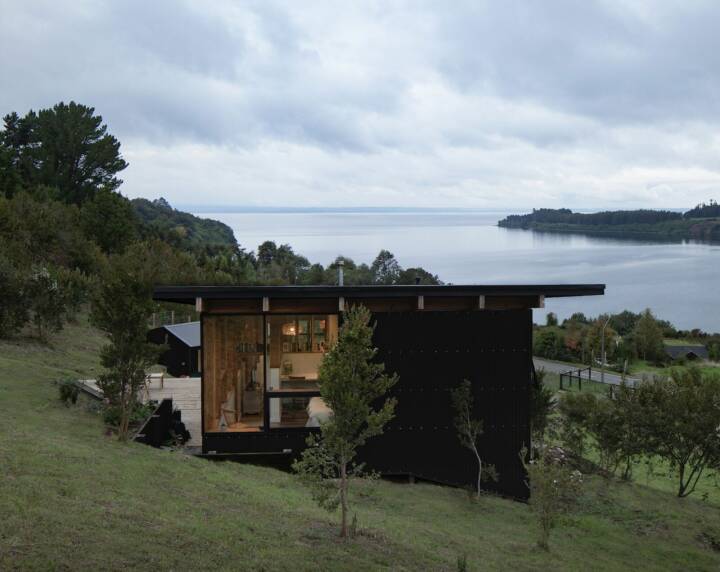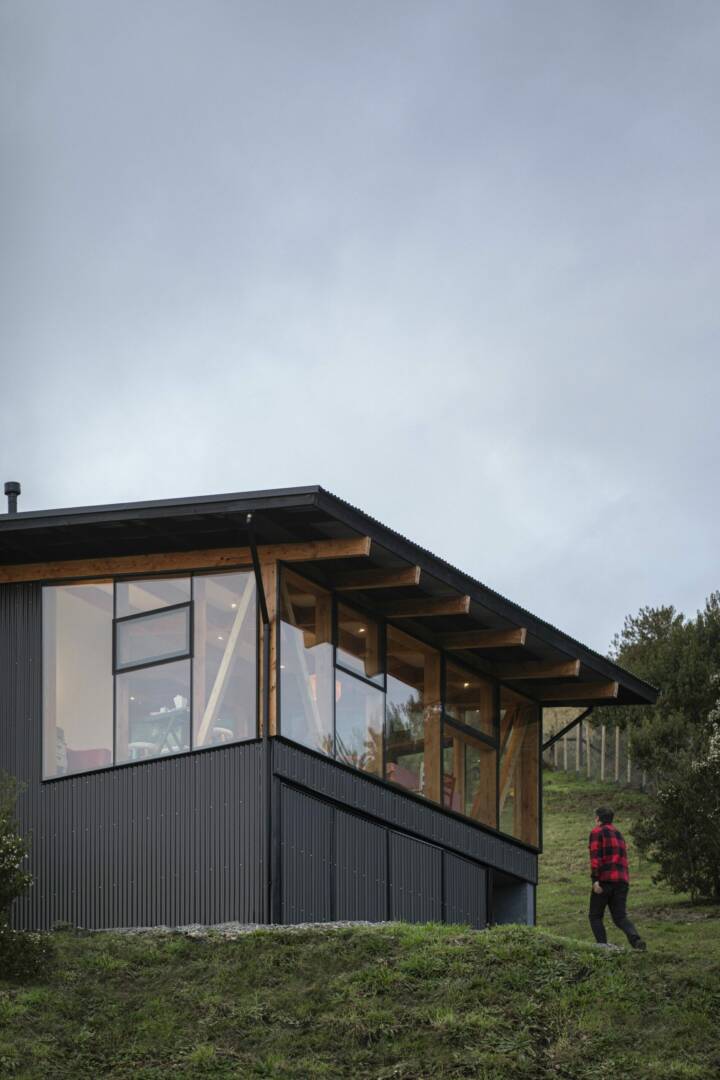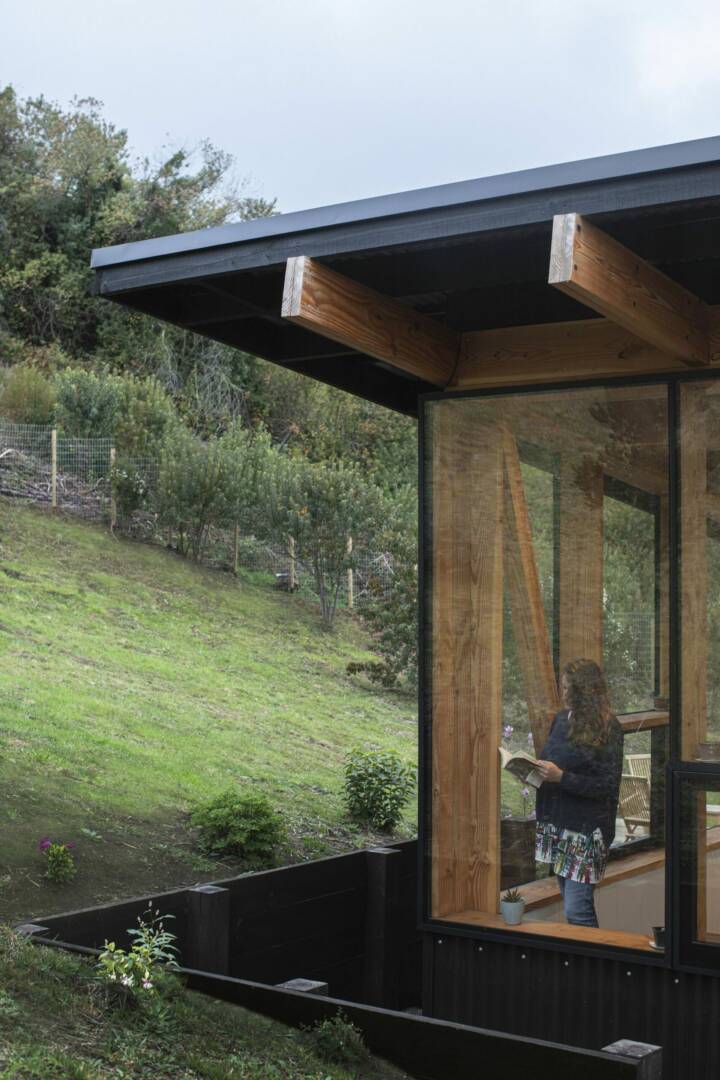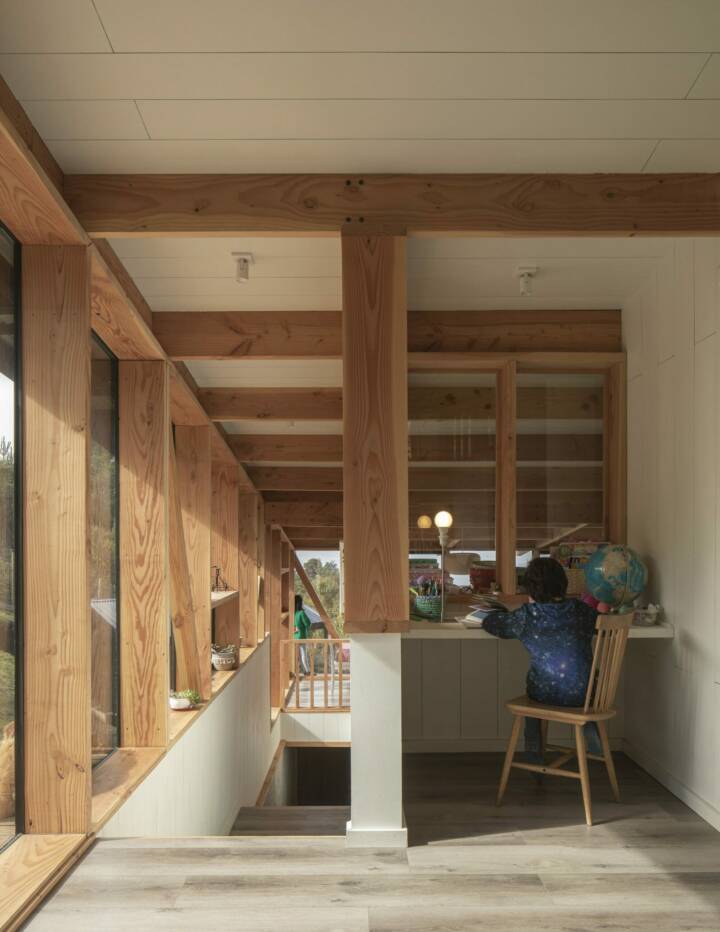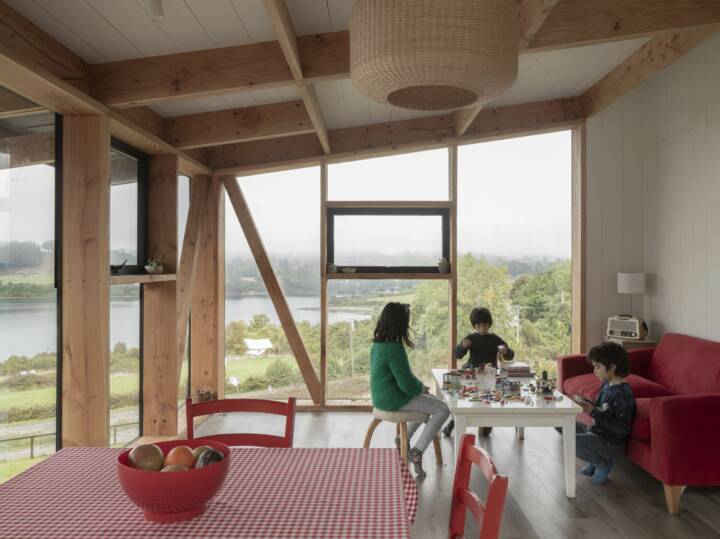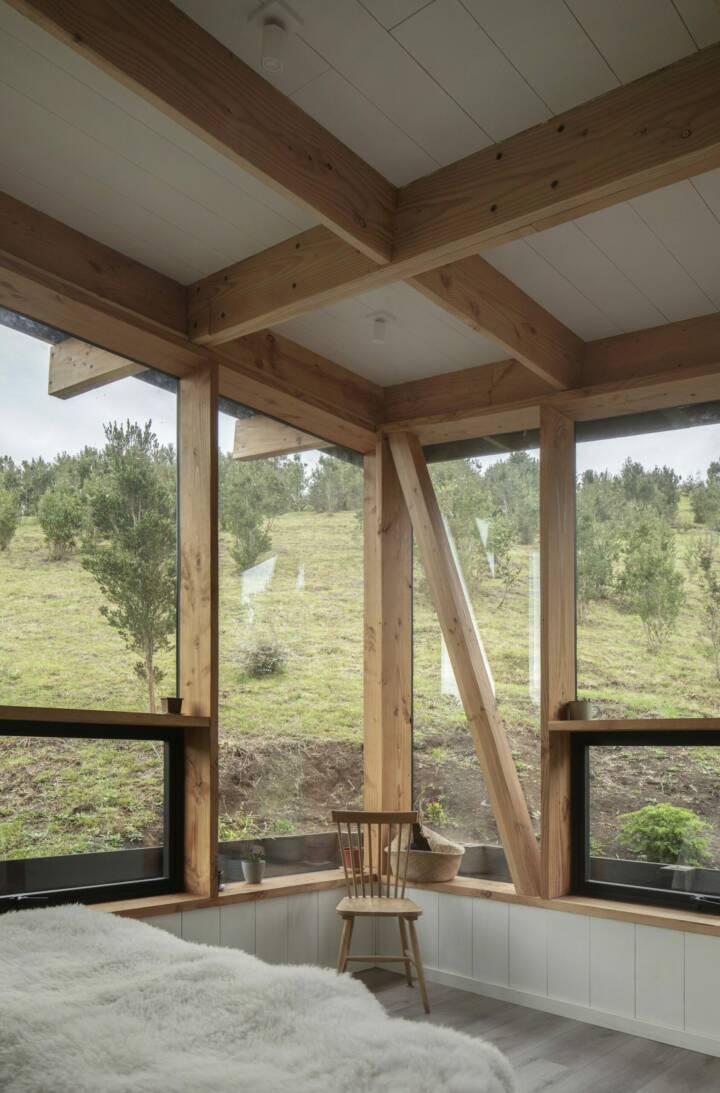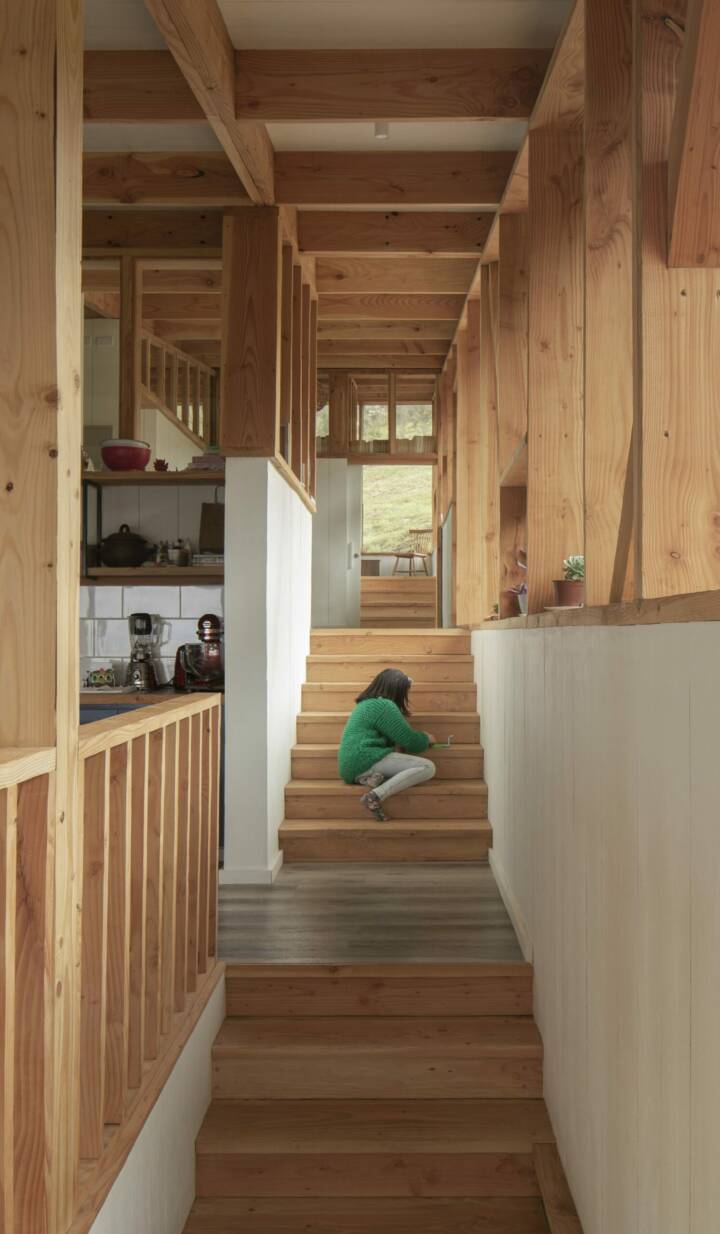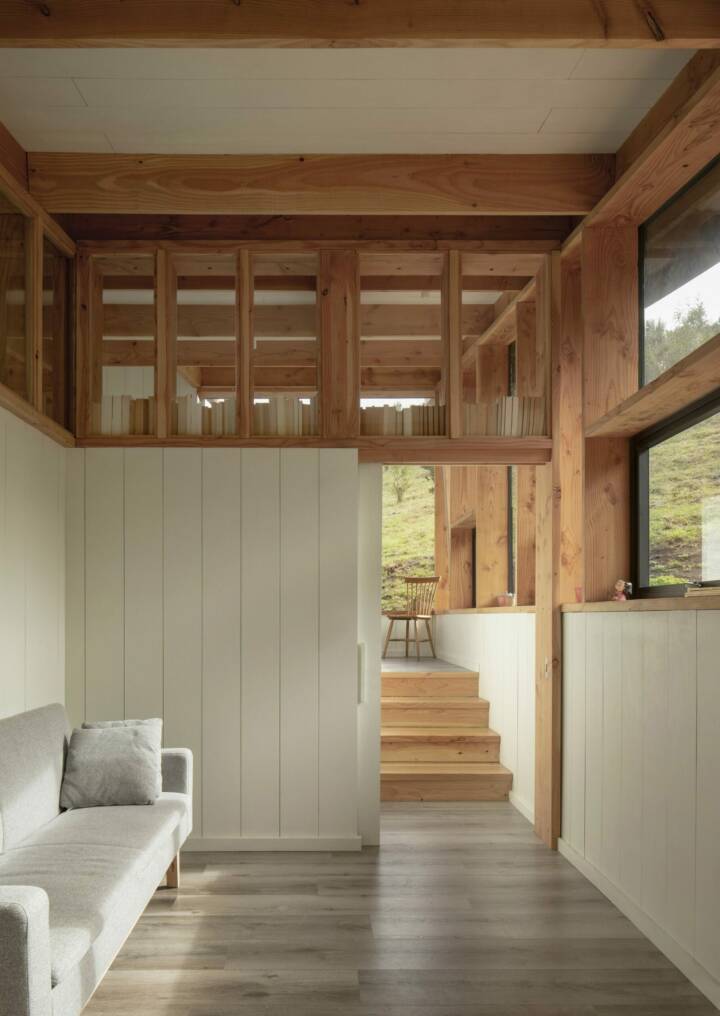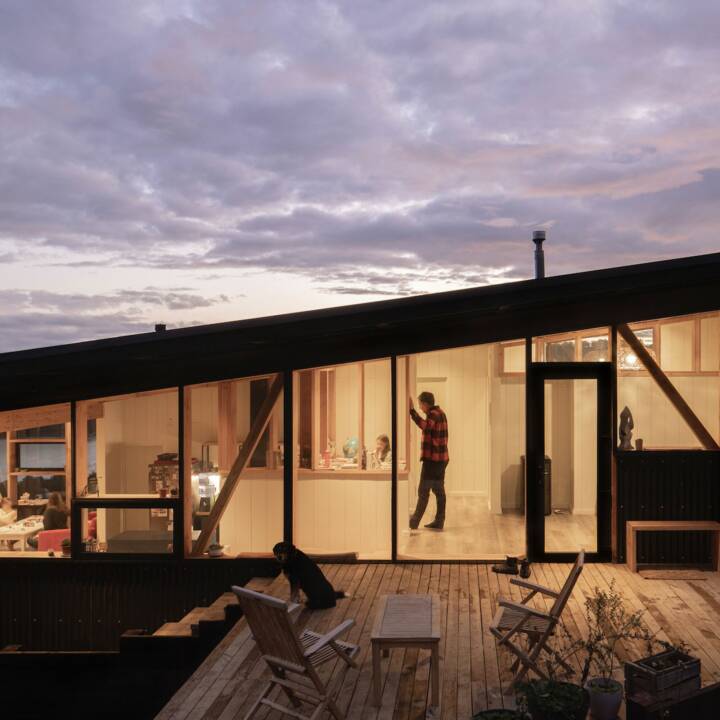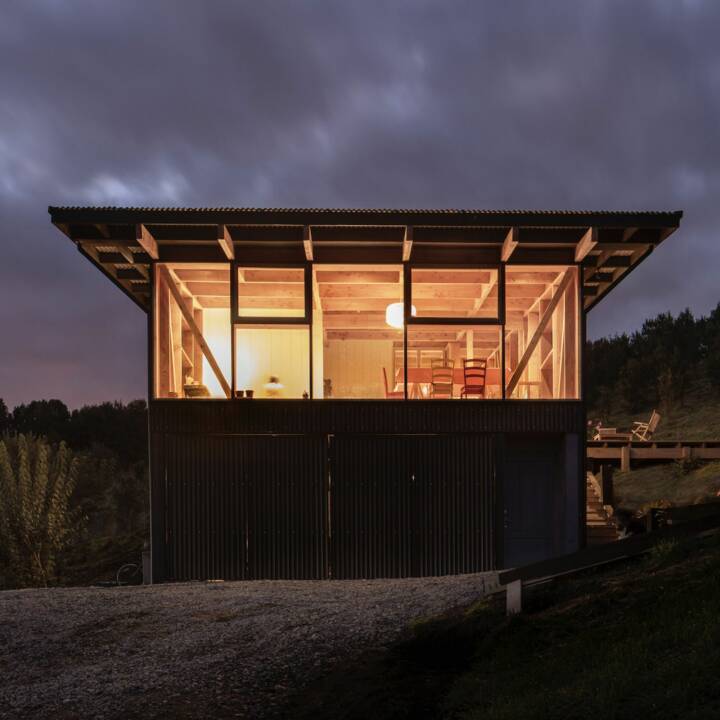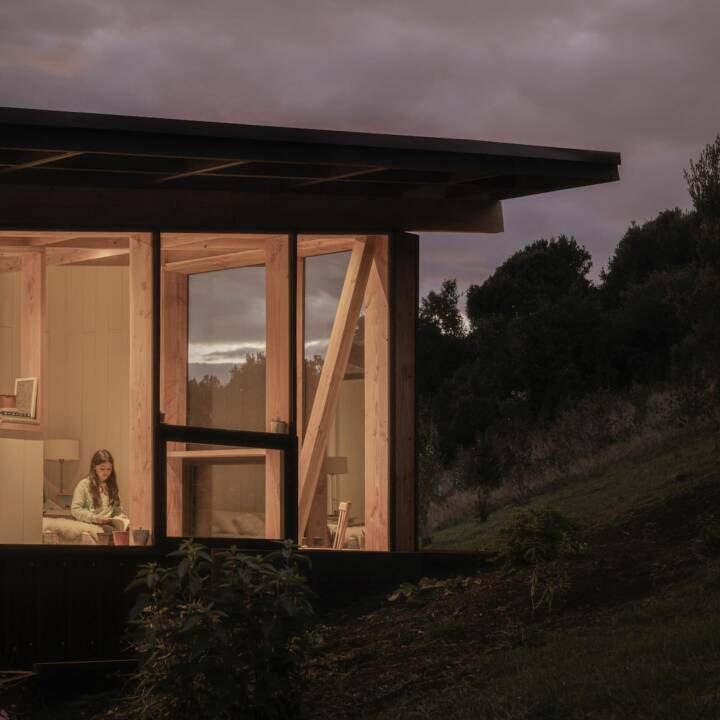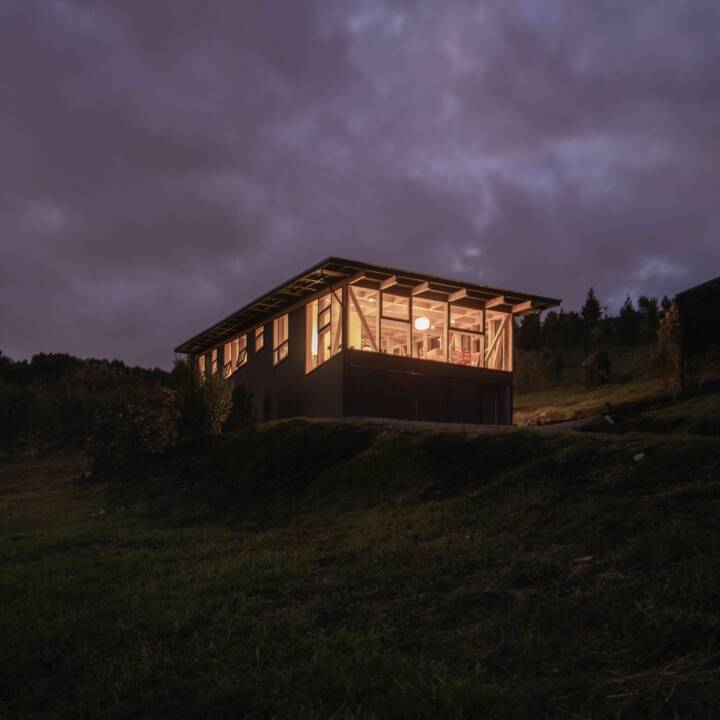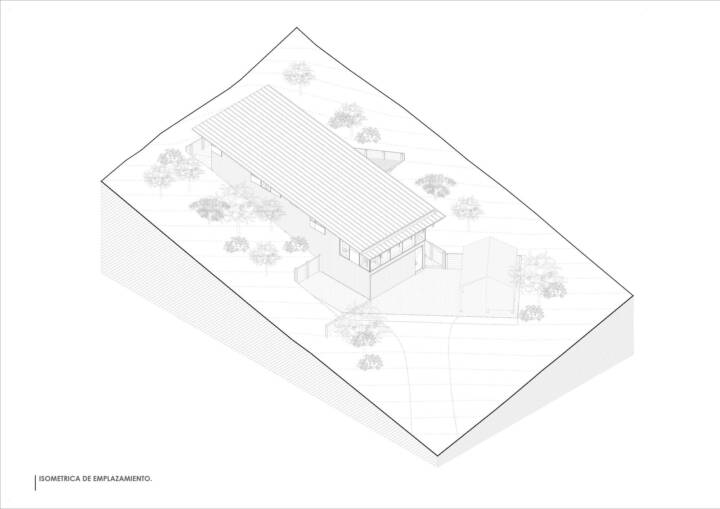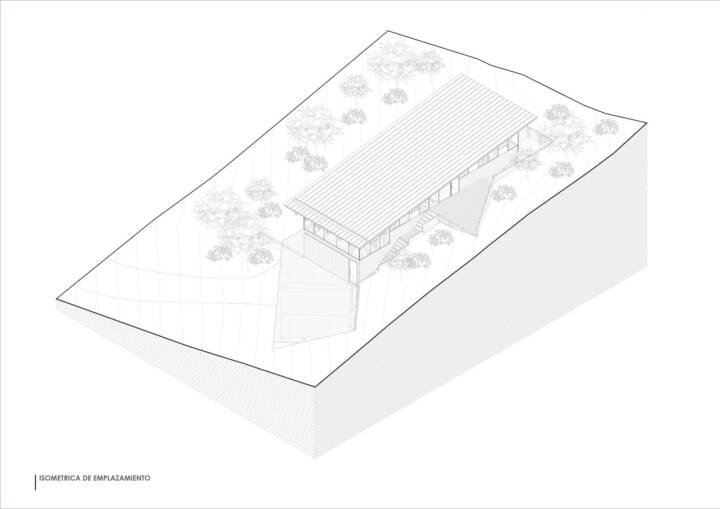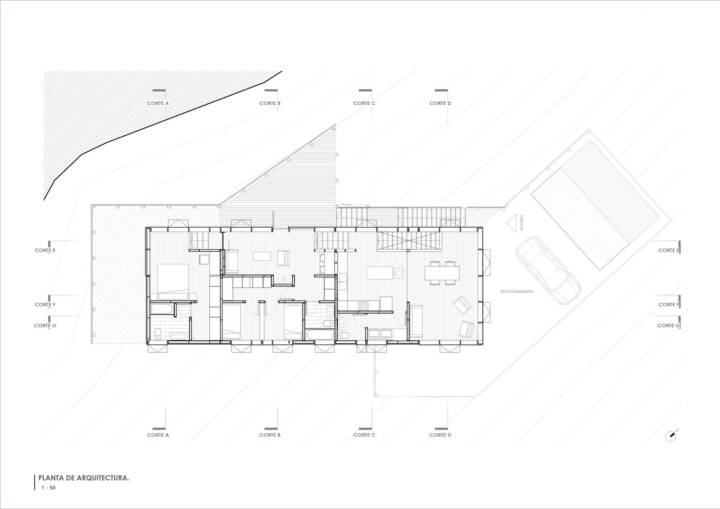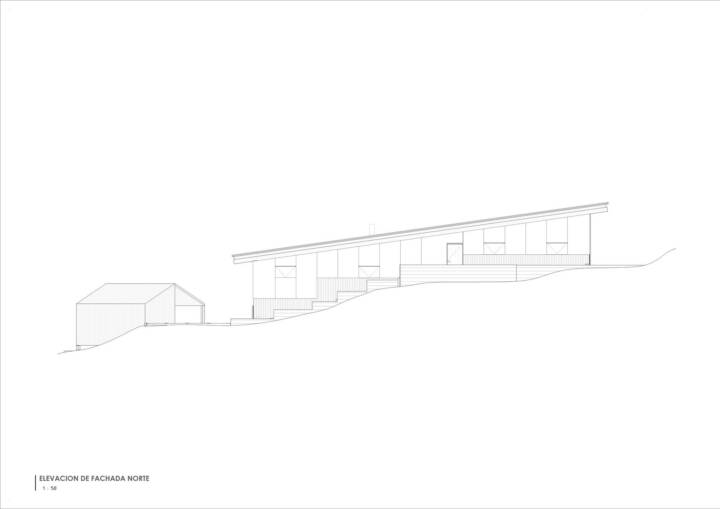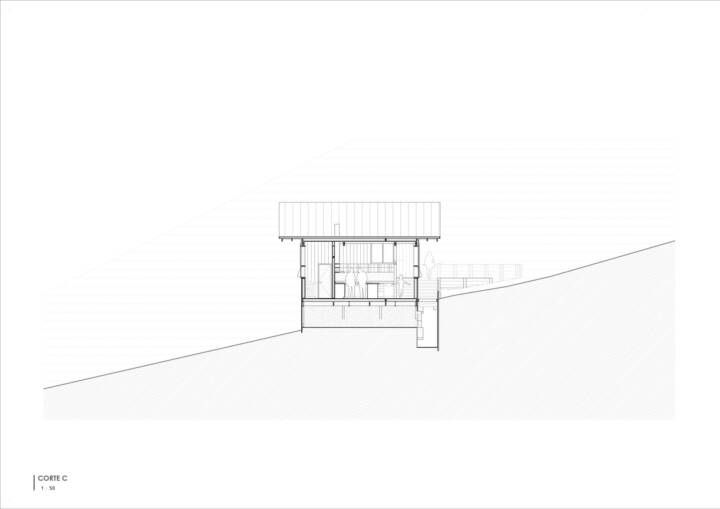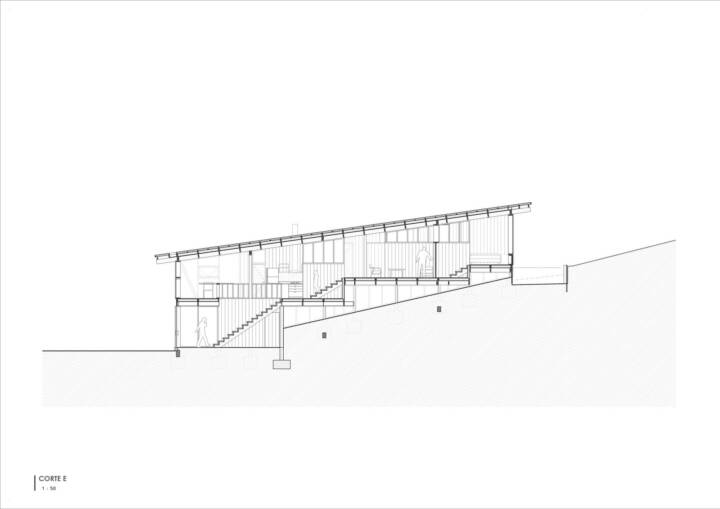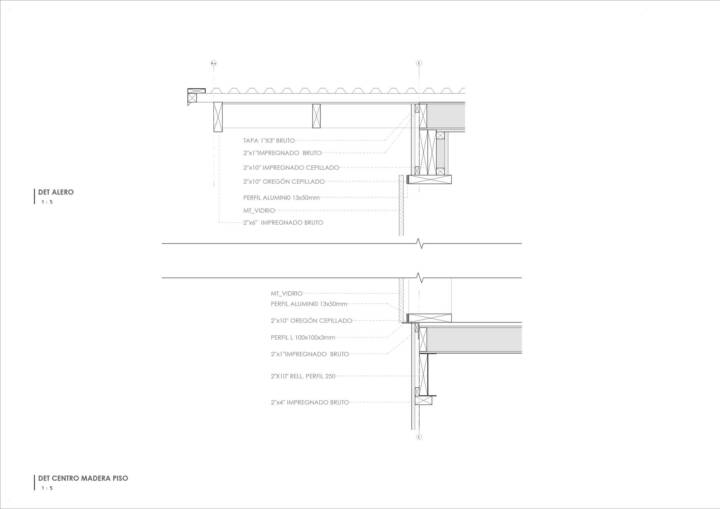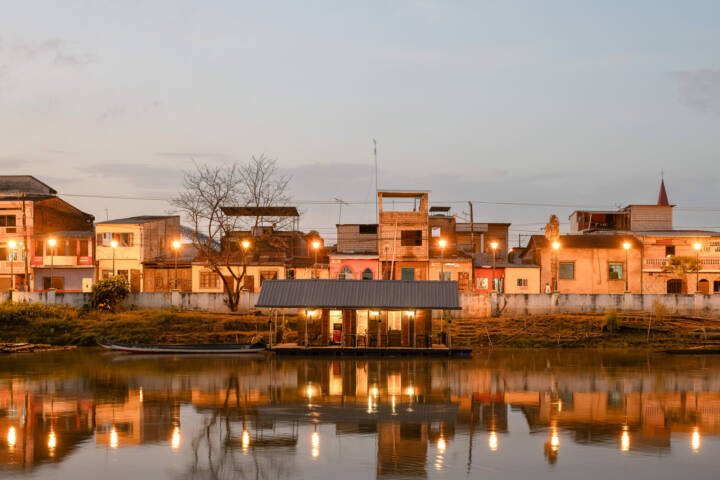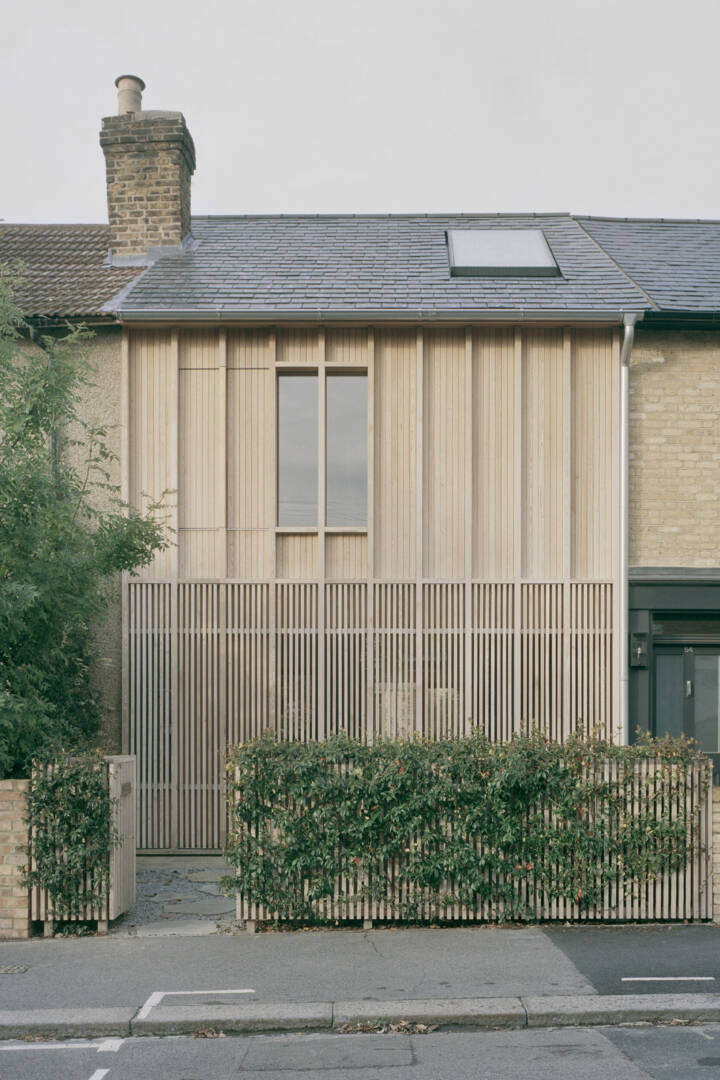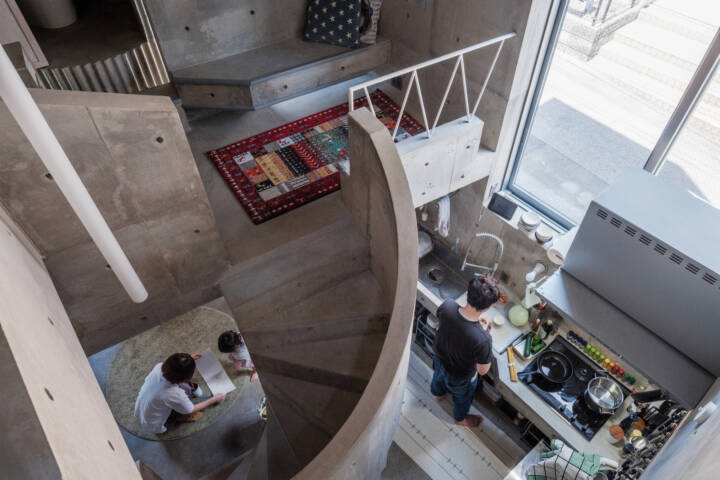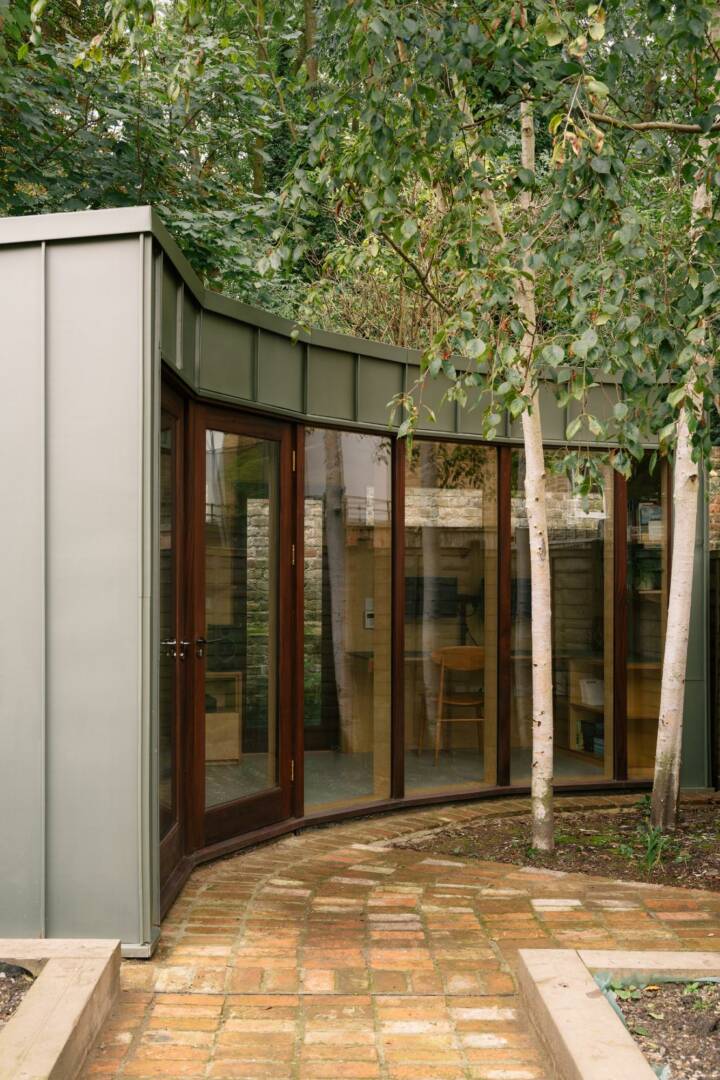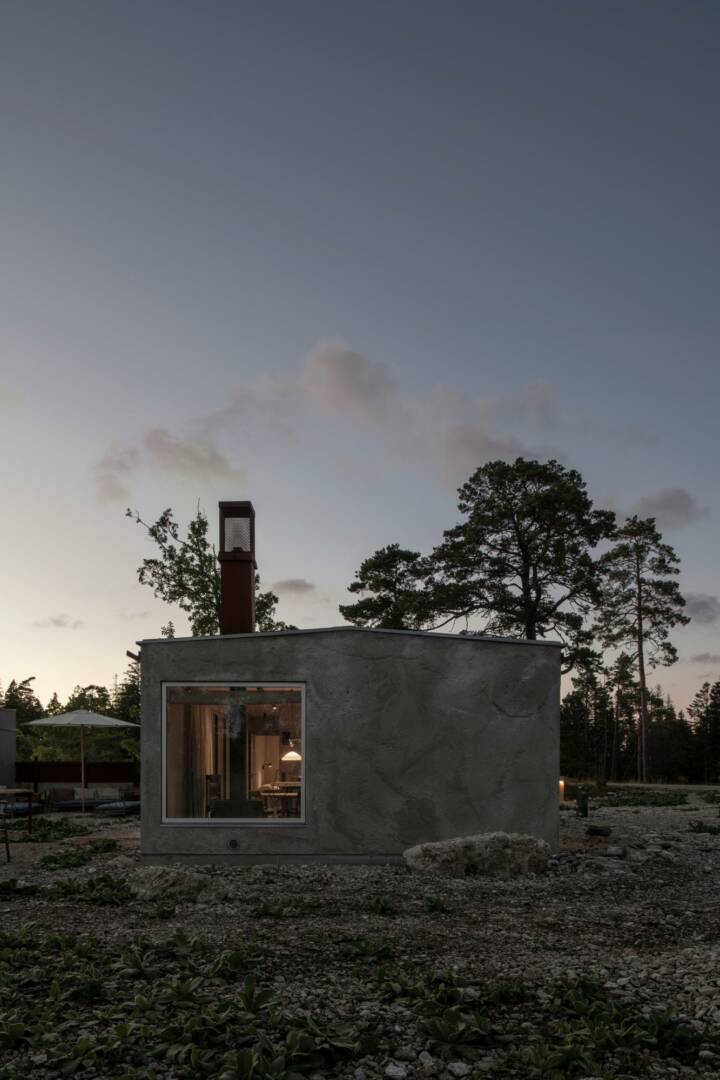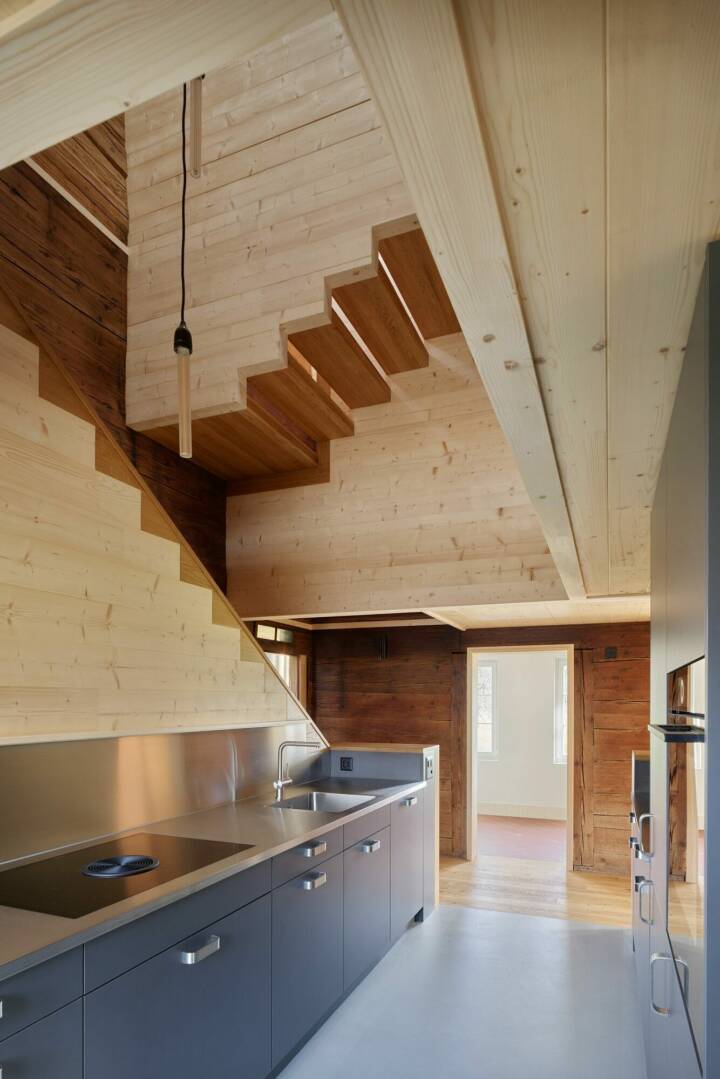Architects: Abarca Palma Arquitectos Cristóbal Noguera Photography: Pablo Casals-Aguirre Construction Period: 2021 Location: Frutillar, Chile
Single-family home located in the Frutillar commune, X Region, in the rural sector of Bahía Domeyko, located in front of Lake Llanquihue on the southern slope of the bay. These two characteristics of the context define the layout of the rooms and the staggered shape of the house. Given the need to have the most public venues with a frontal view of the lake, the main spaces are arranged on the front.
Likewise, the staggered strategy responds to the topography of the hillside with a volume that descends diagonally to the terrain, maximizing the capture of northern sun to counteract the few hours of the location with views to the south. These levels are descending from the most private to the most public.
The first three are only separated by half levels, leaving the master bedroom in the first, children’s bedrooms and study room in the second. Kitchen, loggia, dining room and living room on the third, as the most public level, which opens completely to the lake, leaving the fourth for storage, parking and main access.
Read MoreCloseSpatially, the three interior levels are understood as a sequence of spaces connected by a side staircase that intermittently descends, resulting in a continuous space on the north façade of the house. The volume considers a greater opening in its north, west and east façades, through the exposed wooden and glazed structure.
In turn, the south façade is worked with punctual and directed operations. The entire volume is inscribed under a roof inclined in relation to the slope, which protects from rain and wind with perimeter eaves. The constructive proposal consists of a mixed prefabricated system based on SIP panels as a thermal envelope of slab, wall and roof with 160mm of insulation.
This is combined with wooden structures for pillars, diagonals, beams and window centers. Foundations and containments are made up of a reinforced concrete wall at the base and a system of isolated foundations on the upper platforms, which support a structure of steel and wood beams that receive the SIP slab on each platform. In the interiors, the woods combined with a white finishing base for walls and ceilings are shown.
The corrugated zinc exterior cladding, both on the façade and on the roof, provides material continuity on all its opaque faces, combining exposed wooden elements behind the glass façades.
Text provided by the architect.
